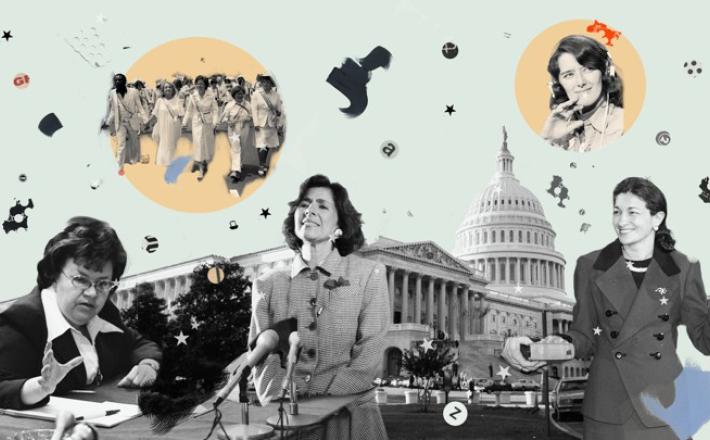The real turning point for women’s political power
Source: The Atlantic
In february 13, 1920, Carrie Chapman Catt stood triumphant before the opening session of the National Woman Suffrage Association convention and declared the organization’s decades-long mission finally accomplished. “Women be glad today. Let your voices ring out the gladness in your hearts,” the 61-year-old suffragist said. Thirty-one states had so far ratified the Nineteenth Amendment, which gave women the right to vote, and the remainder necessary for ratification would soon follow suit. “March on, suffragists,” Catt told the crowd, “the victory is yours.”
But while the activists had achieved a monumental victory for American women, the amendment’s passage was only the first mile marker on a long road to the attainment of political power. It took women 60 years for their voting rates to match those of men, and by then they still had little political influence: The few women with seats in Congress had not served long enough to attain leadership positions, and while some were individually effective, there weren’t enough of them to leverage their numbers to enact policy.
While the suffrage movement offered women access to the democratic process, it was the women’s liberation movement of the mid-to-late 20th century that led to their wielding collective influence: Once more and more women arrived in Washington, D.C., in the 1970s and ’80s, female legislators, often working together across the aisle, began to make the changes so many of them sought. That those changes were utterly transformational doesn’t mean that policy remedies weren’t possible before—but rather that the right legislators weren’t in place to make them.
Click here to read the full article published by The Atlantic on 2 July 2019.

In february 13, 1920, Carrie Chapman Catt stood triumphant before the opening session of the National Woman Suffrage Association convention and declared the organization’s decades-long mission finally accomplished. “Women be glad today. Let your voices ring out the gladness in your hearts,” the 61-year-old suffragist said. Thirty-one states had so far ratified the Nineteenth Amendment, which gave women the right to vote, and the remainder necessary for ratification would soon follow suit. “March on, suffragists,” Catt told the crowd, “the victory is yours.”
But while the activists had achieved a monumental victory for American women, the amendment’s passage was only the first mile marker on a long road to the attainment of political power. It took women 60 years for their voting rates to match those of men, and by then they still had little political influence: The few women with seats in Congress had not served long enough to attain leadership positions, and while some were individually effective, there weren’t enough of them to leverage their numbers to enact policy.
While the suffrage movement offered women access to the democratic process, it was the women’s liberation movement of the mid-to-late 20th century that led to their wielding collective influence: Once more and more women arrived in Washington, D.C., in the 1970s and ’80s, female legislators, often working together across the aisle, began to make the changes so many of them sought. That those changes were utterly transformational doesn’t mean that policy remedies weren’t possible before—but rather that the right legislators weren’t in place to make them.
Click here to read the full article published by The Atlantic on 2 July 2019.